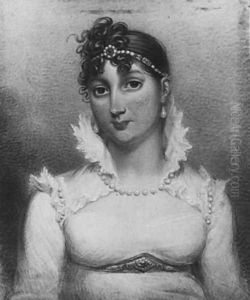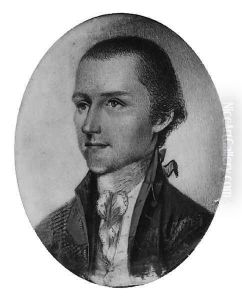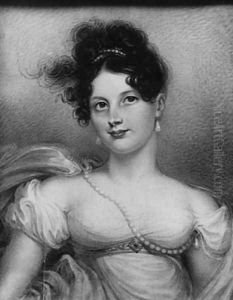Robert Fulton Paintings
Robert Fulton was not a traditional artist in the sense of painting or sculpture, but rather an inventor and engineer whose contributions had a profound effect on art through the realm of technology. Born on November 14, 1765, in Little Britain, Pennsylvania, Fulton displayed an early interest in mechanics and engineering. Although his initial forays into the world of art were through painting and miniatures, which he pursued in Philadelphia, his true legacy lies in his work as an inventor, particularly in the development of steam-powered ships.
Fulton's interest in steamboats began in the late 18th century, and he spent several years in Europe, particularly in England and France, trying to garner support and funds for his projects. It was in France, with the support of Robert R. Livingston, a prominent American diplomat, that Fulton was able to build his first successful steamboat, the 'North River Steamboat,' later known as the 'Clermont,' which made its inaugural voyage from New York City to Albany in 1807. This event marked a significant turning point in transportation history, revolutionizing travel, trade, and the movement of goods and people, with wide-ranging implications for society and the economy.
Beyond his contributions to steam navigation, Fulton also engaged in various engineering projects, including designs for submarines, torpedoes, and canal systems, reflecting his diverse interests and inventive mind. His designs and inventions laid the groundwork for future developments in both naval warfare and civilian maritime transport, showcasing a blend of artistic creativity and technical prowess.
Fulton's impact on the art world can be seen in the broader context of the Industrial Revolution and its effects on society, including the landscape of cities, the expansion of the middle class, and the evolution of transportation and communication. These changes, driven by inventors like Fulton, influenced countless artists, writers, and thinkers of the 19th century and beyond, shaping the way they engaged with the world around them.
Robert Fulton died on February 24, 1815, in New York City, but his legacy lived on, not only through the continued development and expansion of steam navigation but also through the ways his work bridged the gap between art and technology, influencing both in profound ways. Fulton's life reminds us of the intricate connections between creativity and invention, and how visionary minds can alter the course of history, impacting both the practical and aesthetic dimensions of human experience.


